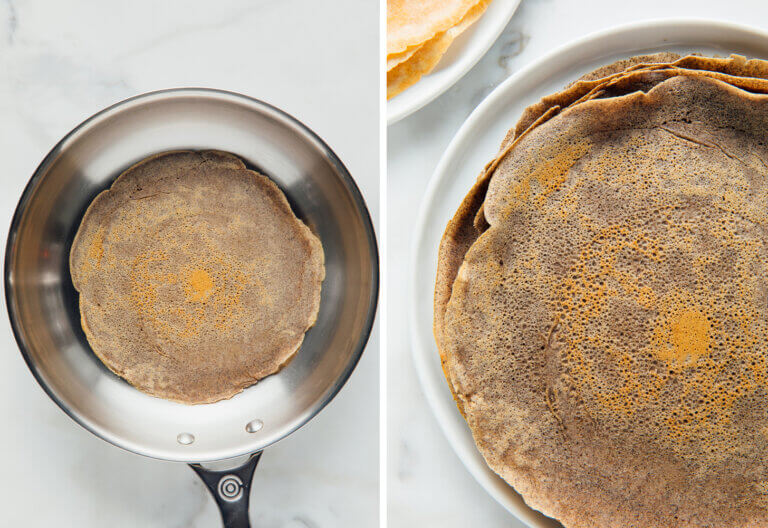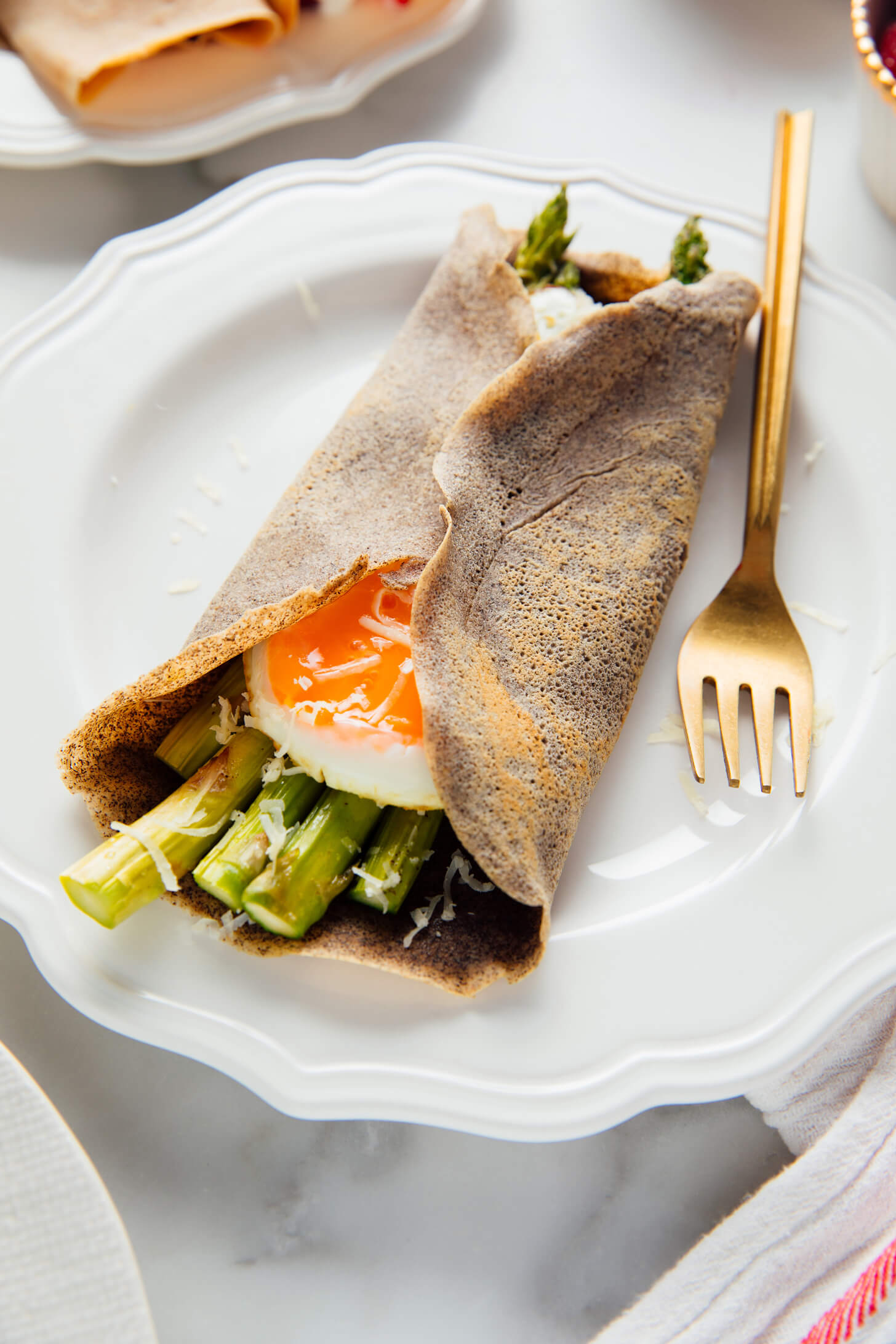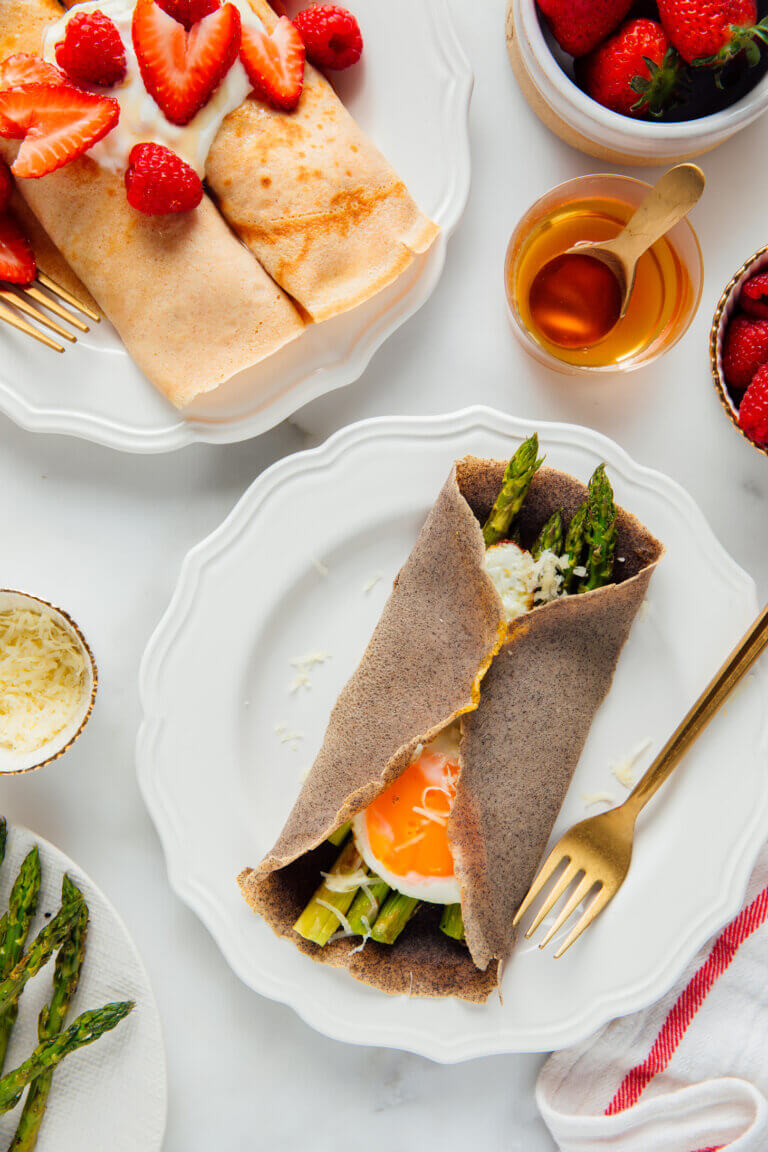This recipe is coming from a long-lasting crepe devotee. I’m so satisfied to share my time tested crepe recipe today. You could accept that crepes are challenging to make or require unique hardware, yet luckily, it’s false! As a matter of fact, these crepes are a snap to whip together in a blender. Beginning to end, they meet up in less than 30 minutes.

This recipe is not difficult to make in a customary skillet. These crepes are a more reasonable size to make at home than the enormous customary crepes you’ll find at a genuine creperie. This recipe is very flexible, as well. Use it to make sweet crepes or appetizing crepes, with normal flour or buckwheat flour. You’ll track down every one of my tips underneath, in addition to a brief video that shows the cooking technique.

Crepe player
Crepes are like hotcakes, yet more slender and a lot lighter. You could say that they’re more complex. They are undeniably lower in sugars. What’s more, they’re most certainly a wonderful choice for any end of the week breakfast or lunch.
As an American, my most memorable taste of crepes occurred in secondary school, when Madame Gordy told us the best way to make them in French class. During my school semester in France, I tested crepes across Bordeaux and Paris, with one especially critical experience by a wellspring in the Latin Quarter.
Nowadays, I fulfill my crepe desires at one of our #1 neighborhood cafés, French Market, or I make them at home with this recipe! Our little child loves crepes with Greek yogurt and cut banana. I want to believe that you partake in these crepes however much we do.
Crêpe Ingredients
These classic crepes are made with just five basic ingredients, not counting salt and optional vanilla extract. Here’s what you’ll need:
1) Flour (3 options)
This crepe recipe works equally well with any of these flours, or any combination of them.
- All-purpose flour yields the most “standard” crepe. These crepes are tender and custard-like—you can taste the egg in the absence of a flavorful flour.
- Whole wheat flour is unconventional but I love the lightly nutty flavor. To me, these crepes taste a little more interesting, and they are slightly more nutritious. Note that whole wheat flour should never taste bitter. If it smells off or tastes bitter, your flour is old and should be replaced.
- Buckwheat crepes are often called Breton gallettes in France, due to their popularity in the Brittany region. Buckwheat flour offers robust, nutty flavor that traditionally favors savory fillings. I personally love buckwheat crepes for both savory and sweet crepes, and request buckwheat crepes whenever possible. As a bonus, crepes made with 100 percent buckwheat flour are gluten free.
2) A tiny bit of sugar
A small amount of sugar offers a faint sweetness, but more importantly, it helps prevent the crepes from burning against the skillet. For savory crepes (or versatile crepes that can go sweet or savory depending on the toppings), start with the lower amount offered in the recipe. If you’d prefer your crepes to be on the sweeter side, use the full amount. Either way, it’s not much sugar.
3) Milk of choice
This recipe will work well with any variety of milk. I tested these crepes with whole milk and cashew milk, and both variations turned out beautifully.
4) Eggs
Eggs provide the characteristic custard flavor that you’ll find in classic crepes. They also help bind the ingredients together, especially in regard to the buckwheat crepes.
5) Butter
Melted butter offers some fat that helps the crepes stay nice and tender. We’ll use a little more to grease the pan between each crepe.
Crêpe Tips
You’ll find my simple recipe below. Here are a few tips before you get started:
Use a blender, if you have one.
The blender is ideal because it introduces tiny bubbles into the batter, and the bubbles make crepes more fun to eat in my professional opinion. For buckwheat crepes, using a blender or food processor will really help distribute the flour more evenly through the batter.
Use a stainless steel skillet or non-stick skillet.
The trick to making beautiful crepes in a stainless steel skillet is to let the skillet get nice and warm before you get started. Non-stick skillets also work well. The electric crepe makers used in France have cast iron tops, but cast iron skillets are very heavy, so they’re difficult to lift and swirl with one hand.
Lightly butter the skillet between each crepe.
Without enough butter, your crepes won’t develop any bubbles. Too much butter, and the crepe won’t gain traction. You are using too much butter if the crepe slides all around the pan.
Constantly monitor your temperature.
When you get into a rhythm of making the crepes, you’ll begin to notice when the pan is getting too hot or cold. I always start at about medium heat and continuously tweak the temperature as I go (usually lower). You want the temperature warm enough that the crepes turn lightly golden in spots and produce bubbles as they cook.
How do you know if your pan is the right temperature? The crepe should begin to cook as it hits the pan. Your pan is too hot if you can’t give it a proper swirl before the crepe solidifies (runners shooting off the side of your crepes is a sign that the pan is too hot). If the butter is sizzling and smoking upon impact, your pan is definitely too hot and you need to give it a rest.

Crêpe Topping Suggestions
Sweet toppings
Sweet crepes are typically enjoyed during breakfast or as dessert. They’re also a fun afternoon treat.
- Butter or honey butter
- Fruit: Sliced apple, pears, peaches, strawberries and other berries, bananas
- Chocolate: Finely grated or melted chocolate sauce
- Coconut (shredded) or coconut butter
- Jam, preserves, applesauce or compote
- Honey, maple syrup or powdered sugar
- Lemon curd or a squeeze of lemon juice
- Nuts, including sliced almonds or chopped toasted walnuts or pecans
- Nut butters, like peanut or almond butter
- Nutella (hazelnut chocolate spread)
- Whipped cream, Greek yogurt or custard
Savory toppings
Savory crepes are typically served for breakfast or lunch. For savory crepes, you might prefer to top the crepes while they are still in the warm pan. This gives cheese time to melt. Simply start to top the crepe as it turns more matte than shiny (skip the flipping step). Slide the completed crepe onto a plate, then roll or fold it into quarters.
- Arugula or fresh herbs, including chives, parsley or basil
- Cheese: Gruyère, cheddar, Emmental, goat, Swiss
- Scrambled or fried eggs
- Pesto
- Ratatouille
- Vegetables: artichoke, roasted asparagus, sautéed mushrooms, fresh or roasted tomatoes


Average Rating